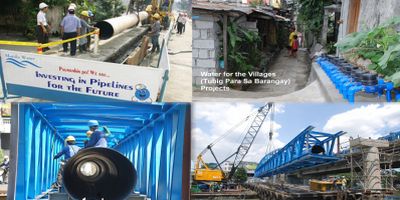
 Water supply continues to be a pressing concern in developing countries around the globe. The World Health Organization maintains that 884 million people—one of every eight people on the planet—do not have access to safe water, and that 2.5 billion people—two-fifths of the world’s population—do not have access to adequate sanitation. Polluted water is estimated to affect the health of more than 1.2 billion people and contribute to the death of an average 15 million children every year. That is a higher death toll than AIDS, malaria, and measles combined.
Water supply continues to be a pressing concern in developing countries around the globe. The World Health Organization maintains that 884 million people—one of every eight people on the planet—do not have access to safe water, and that 2.5 billion people—two-fifths of the world’s population—do not have access to adequate sanitation. Polluted water is estimated to affect the health of more than 1.2 billion people and contribute to the death of an average 15 million children every year. That is a higher death toll than AIDS, malaria, and measles combined.
Costs
Aside from that appalling statistic, nations also pay a high economic cost for inadequate water supplies. For example, the United Nations Development Program says that in sub-Saharan Africa the costs associated with unclean water amount to 5 percent of its gross domestic product. The United Nations Development Program also states that worldwide, water-related diseases cause children to lose 443 million school days annually. The United Kingdom’s Department for International Development says that households in rural Africa spend 26 percent of their days on average carrying water from distant sources. Women do the majority of this work, carrying about 44 pounds of water on most trips.
Infrastructure
Water infrastructure is one of the most rewarding areas of investment for public and private institutions, and there have been substantial successes. In the 1960s, when South Korea’s per capita income was about the same as Ghana’s, the country made massive investments in water infrastructure and halved under-five mortality rates without adding medical capacity—the investment is also seen as a major component of South Korea’s economic upswing.
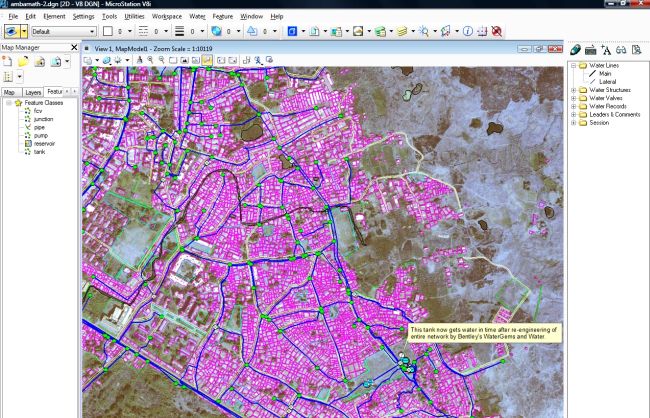
In fact, the United Nations Development Program states that for every $1 invested in water and sanitation, $8 is returned in increased productivity. Also, the Department for International Development states that 11 percent more girls attend school when water and sanitation are available, with related studies showing that educated women lead to more positive health and economic results in developing countries.
Water infrastructure is also an area where leading-edge technology can be readily applied in developing nations because sophisticated design and analysis software can be applied to any system, regardless of its state of development. Even crude systems that feature surface-laid pipe, for example, can be tweaked and optimized with network modeling software to reduce nonrevenue water—whether that nonrevenue water is due to leaks, customer meter inaccuracy, pressure mismanagement, or theft. Just reducing waste can do an enormous amount of good.
In fact, the World Bank estimates that if world water loss in water systems was reduced 50 percent, an additional 228 million people could have access to clean water. This is an achievable figure. Nonrevenue water, expressed as a percentage of total system input, is just 15 percent in developed countries. In developing countries, the figure is about 35 percent.
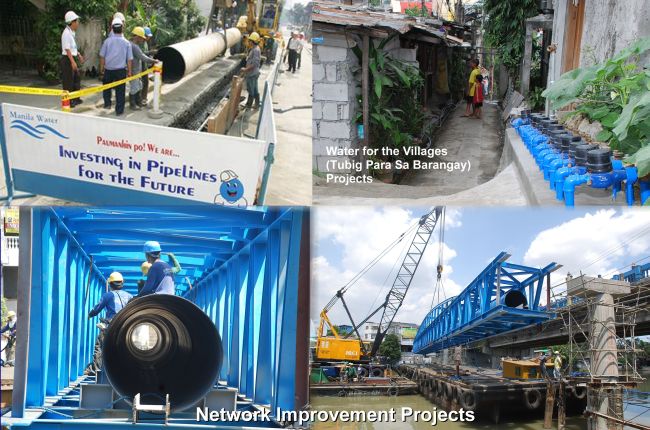
It is clear, then, that investment in water infrastructure and the application of sophisticated technology to existing supply systems have the potential to radically improve health and economic conditions in developing countries. Furthermore, substantial improvements have been documented numerous times. Here are two outstanding examples of effective intervention in existing water infrastructure.
Reducing nonrevenue water in the Philippines
Manila Water Company’s business plan called for sustainable expansion of its coverage south of Rizal Province and the Manila metro area, an initiative that ultimately benefited more than 3 million households. In fact, after the expansion of service, the area has seen significant reduction of diarrhea and cholera outbreaks due to improved sanitation and cleaner water.
But Manila Water Company first had to overcome multiple challenges. The first was primarily technical. The existing central distribution system was served by two primary collection networks, and these networks were badly out of balance. The east transmission line was overloaded and the west line was underutilized.
Wasted water was still a problem—although Manila Water Company had dramatically lowered nonrevenue water from 63 percent in 1997 to 24 percent in 2007, meeting expansion goals called for further reduction. The utility knew that many kilometers of asbestos cement pipe and fiberglass reinforced plastic pipe were prone to breakage, and pipe bursts in roadways were interrupting supply to thousands of households. To correct this, about 1,000 kilometers of pipe needed to be replaced. And there was also an undocumented amount of unknown or abandoned lines that needed to be assessed.
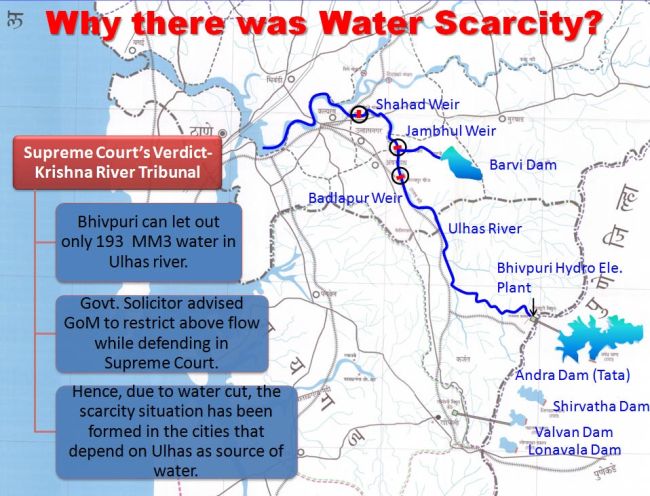
The second set of challenges was primarily social. Much nonrevenue water and water contamination was due to theft and illegal connections. To combat this, low-income communities had to get involved in nonrevenue water-reduction programs because endemic corruption and mismanagement could only be addressed with their cooperation.
Building a model of the central distribution system was a way to address both sets of challenges. Using WaterGEMS and its built-in GIS tools, an accurate hydraulic model was built and tied to a GIS.
Eight design management zones were created, based on hydraulic boundaries, and used to analyze pressure and loss statistics. The model and design management zones were also used to test different mitigation and expansion strategies. This work led to an effective master plan that used capital funds efficiently. From 2007 to the first quarter of 2009, nonrevenue water was reduced from 24 percent to 18 percent, and annual operational expenses were reduced by nearly 1 million dollars. Currently, 99 percent of the system enjoys 24/7 access to clean water, and average pressure has increased from 7 psi to 17 psi.
Meanwhile, the GIS was also used to enhance a community outreach program. Low-income families living near creeks were identified as prime polluters and spreaders of disease, and special effort was made to provide potable water and effective sanitation in these areas. The model and the design management zones also helped to identify areas where high nonrevenue water rates indicated theft and illegal connections, and a plan called “Water for the Villages” was implemented to establish more registered water connections at affordable costs. The highly successful implementation helped the region to weather El Niño-caused drought in 2008 without significant reduction of supply, even though many millions of people were being added to the supply network.
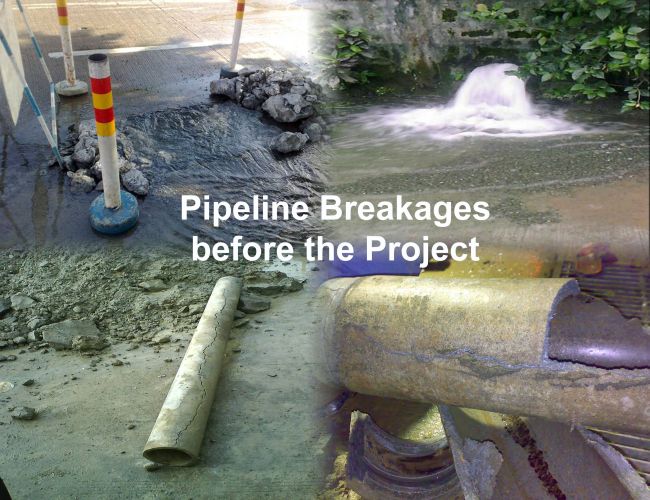
17 million people in crisis in India
When India’s Supreme Court issued a 2009 ruling on the Krishna River Tribunal limiting the annual allotment to the Indian state of Maharashtra, the city of Mumbai was drastically affected—water supplies were actually turned off one day each week, depriving 17 million people of a basic life necessity. Worse, a distribution system with inadequate pressure management kept water from getting to some areas for over 30 hours after pumps were turned back on. This meant that millions of citizens went without water access for over two days.
Rioting and vandalism ensued, and police forces were deployed in the entire Mumbai metro area, and the Chief Minister of Maharashtra directed the state’s water supply and sanitation department to take necessary measures to mitigate this crisis. Working under unusual pressure—field crews required a police escort to do necessary work—the department set out to resolve the problem. Maharashtra’s water system is exceptionally complex, poorly documented, and the terrain is uneven. Nevertheless, department engineers set out to create a hydraulic model in a short time period. By doing as much field work as possible under the circumstances, incorporating existing work and making assumptions, and deploying WaterGEMS, designers were able to assemble and analyze a working model using extended period simulation techniques. Per the model, the network was taking as long as 14 hours after shutdown to refill pipes and 30 hours to fill storage tanks.
Multiple scenarios were played out on the hydraulic model, and designers settled on a plausible fix involving interlinks between network sections and a completely revamped valve operation schedule. Using emergency funds of about $10 million, and with repair crews working day and night under police guard, the new design was implemented successfully and completed in March 2009, less than six months after the shutdown order was enforced. After the network was revamped, storage tanks refilled in less than 10 hours and civil order was restored. Had the fix not worked, the only viable alternative would have been water tankers—as many as 2,000 would have been needed each week, at a weekly cost of nearly $4 million.
Despite the proven value of investments in this area, water infrastructure attracts less philanthropy than other sectors. For instance, the Organization of Economic Cooperation and Development says that over the last 10 years funding for HIV/AIDS treatment has increased by nearly 500 percent. In the same time period, funding for improved water and sanitation in the area only increased by 79 percent, despite the potential for mitigating human suffering and raising living standards actually being much higher for water infrastructure investment. Sadly, at any one time, about half the hospital beds in developing countries are filled with people suffering from diarrhea and other diseases related to unclean water and lack of sanitation. The opportunities to improve the lives of impoverished peoples with better water technology appear almost limitless.
———————————————————————-
Article provided by Bentley.
For more information: www.bentley.com